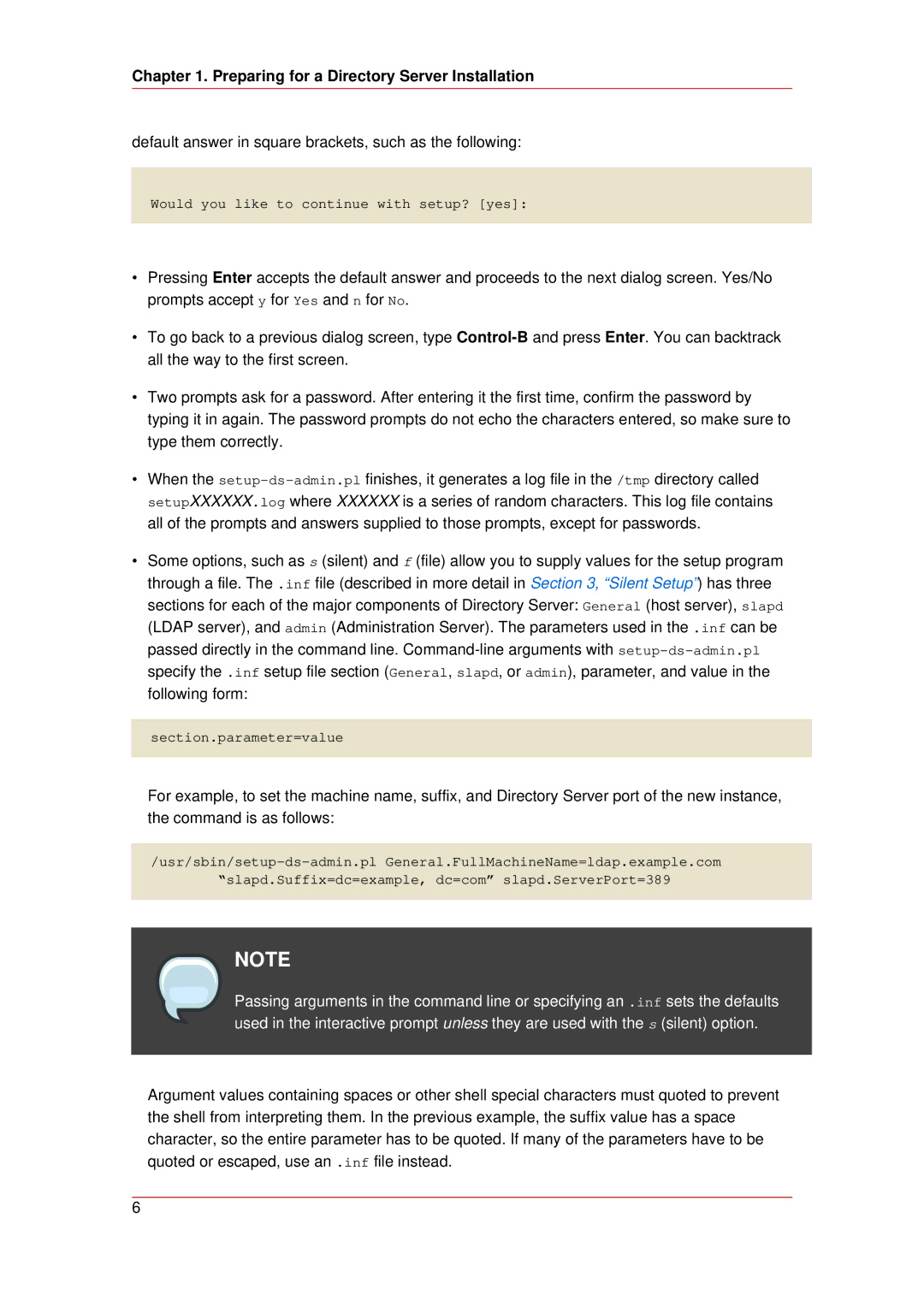
Chapter 1. Preparing for a Directory Server Installation
default answer in square brackets, such as the following:
Would you like to continue with setup? [yes]:
•Pressing Enter accepts the default answer and proceeds to the next dialog screen. Yes/No prompts accept y for Yes and n for No.
•To go back to a previous dialog screen, type
•Two prompts ask for a password. After entering it the first time, confirm the password by typing it in again. The password prompts do not echo the characters entered, so make sure to type them correctly.
•When the
•Some options, such as s (silent) and f (file) allow you to supply values for the setup program through a file. The .inf file (described in more detail in Section 3, “Silent Setup”) has three sections for each of the major components of Directory Server: General (host server), slapd (LDAP server), and admin (Administration Server). The parameters used in the .inf can be passed directly in the command line.
section.parameter=value
For example, to set the machine name, suffix, and Directory Server port of the new instance, the command is as follows:
“slapd.Suffix=dc=example, dc=com” slapd.ServerPort=389
NOTE
Passing arguments in the command line or specifying an .inf sets the defaults used in the interactive prompt unless they are used with the s (silent) option.
Argument values containing spaces or other shell special characters must quoted to prevent the shell from interpreting them. In the previous example, the suffix value has a space character, so the entire parameter has to be quoted. If many of the parameters have to be quoted or escaped, use an .inf file instead.
6
